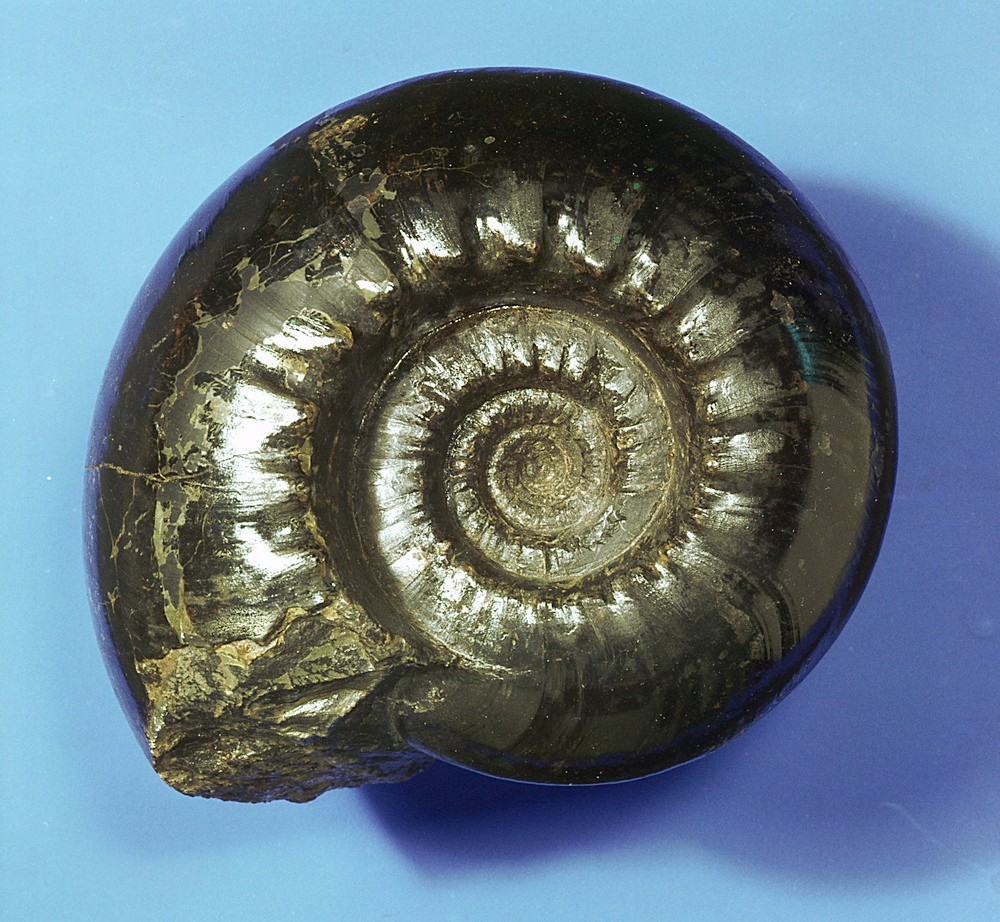| P number: | P549565 |
|---|---|
| Caption: | Gastrioceras, a Carboniferous ammonite. |
| Description: | Gastrioceras belongs to the order of ammonoids called Goniatitida (goniatites). It lived during late Carboniferous times (late Namurian to mid Westphalian) in Europe, North Africa, Asia and North America, about 310-320 million years ago. The shell of Gastrioceras is rounded and it has a series of well-formed nodes running around each whorl. As each whorl is larger and more inflated than the preceding one, the umbilical shoulders are step-like down into the centre of the shell (the umbilicus). Growth lines can also be seen on the surface of the shell. The ammonoids are molluscs that evolved from nautiloids during the Palaeozoic. They have a thin coiled shell (some early species have a straight shell) with an initial, bulbous protoconch in the centre. Internally they have a siphuncle, a tube that runs around the margin of the whorls, connecting all the chambers of the conch. The chambers join to the outer shell where an intricate suture can be seen. The complexity of the sutures increased with time and reached a peak in the ammonites. Ammonoids evolved during the Devonian and goniatites are common particularly in the Carboniferous. In the Triassic ceratites and phylloceratites appeared, the latter evolving into the ammonites in the earliest Jurassic. |
| Photographer: | Unknown |
| Copyright statement: | Unknown |
| Orientation: | Landscape |
| Size: | 540.51 KB; 1000 x 922 pixels; 85 x 78 mm (print at 300 DPI); 265 x 244 mm (screen at 96 DPI); |
| Average Rating: | Not yet rated |
| Categories: | Best of BGS Images/ Fossils |
Reviews
There is currently no feedback

